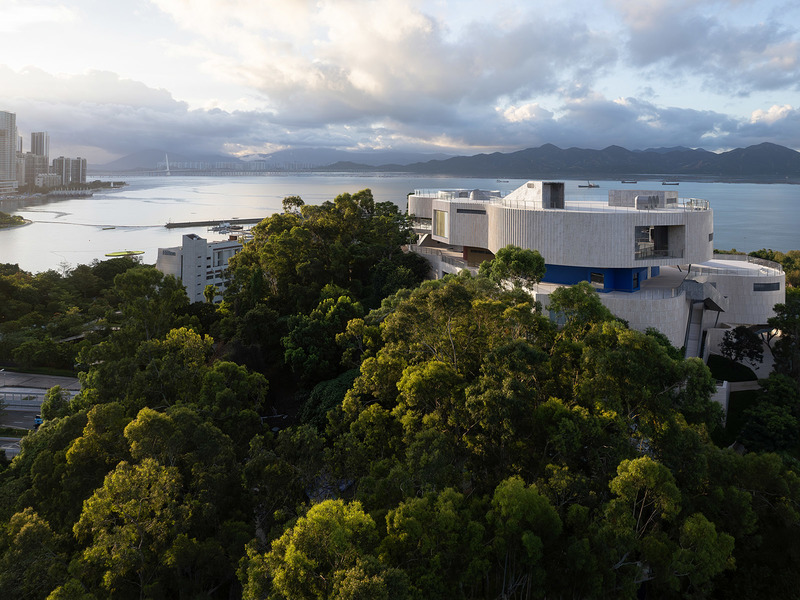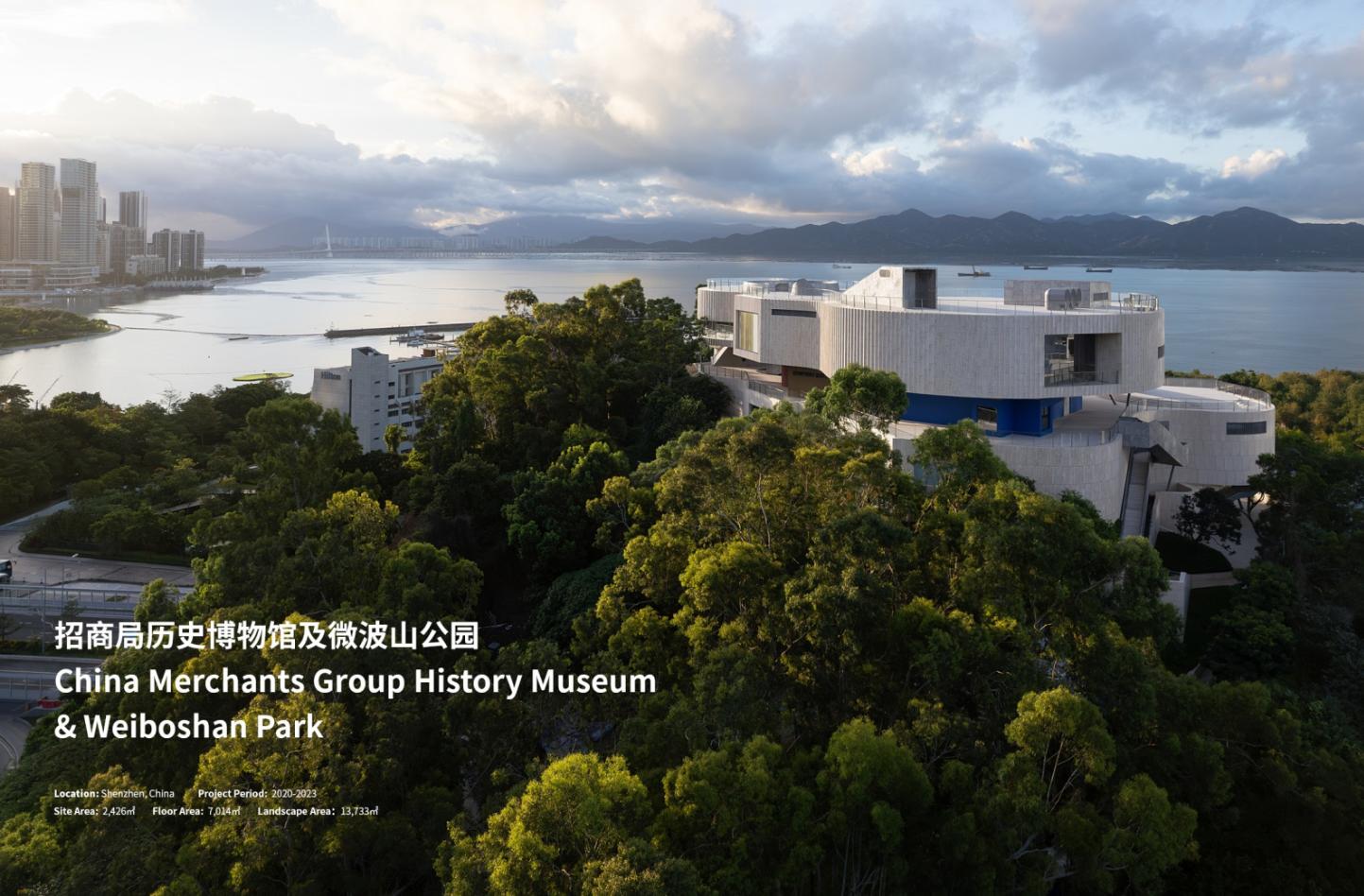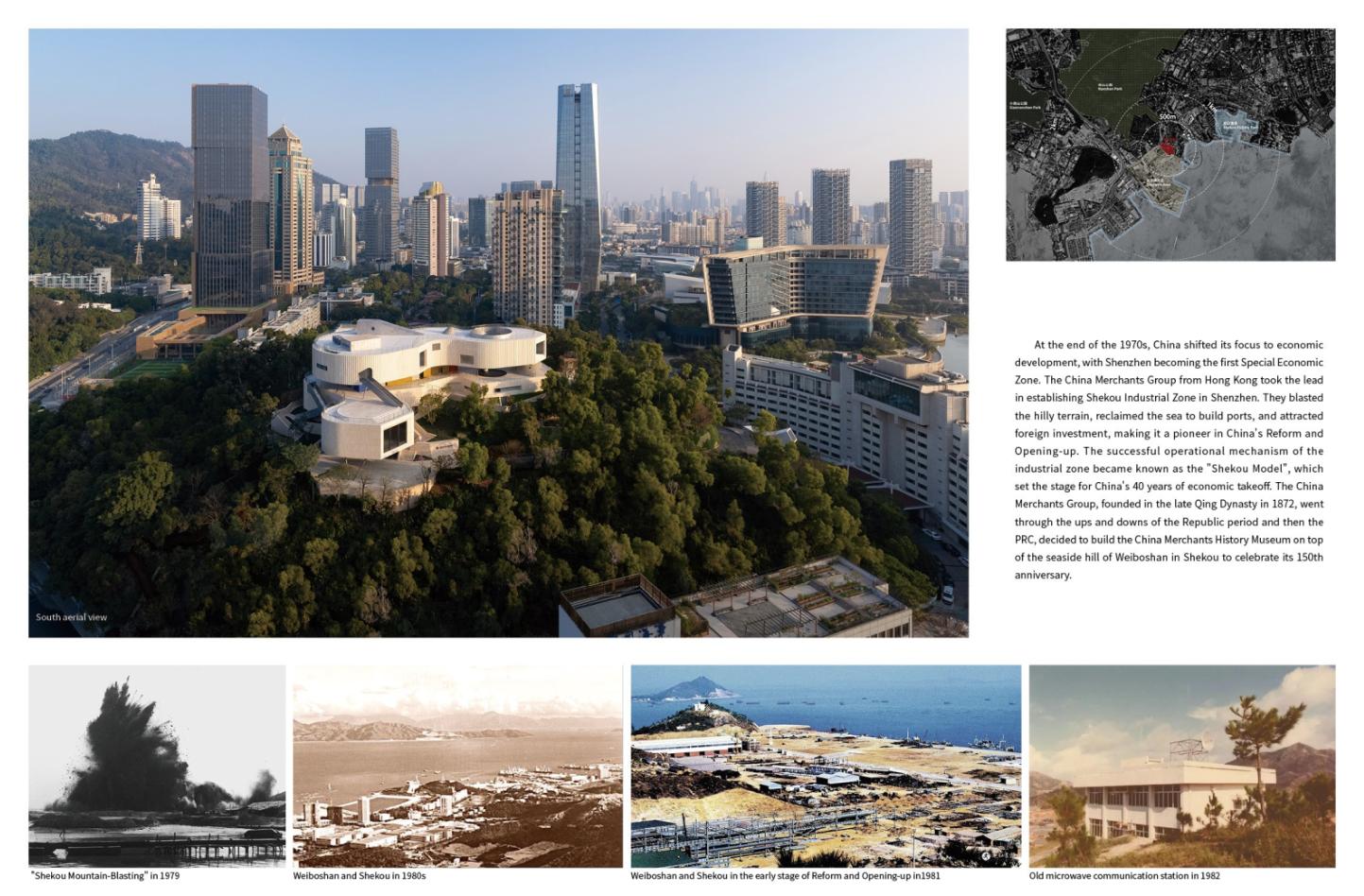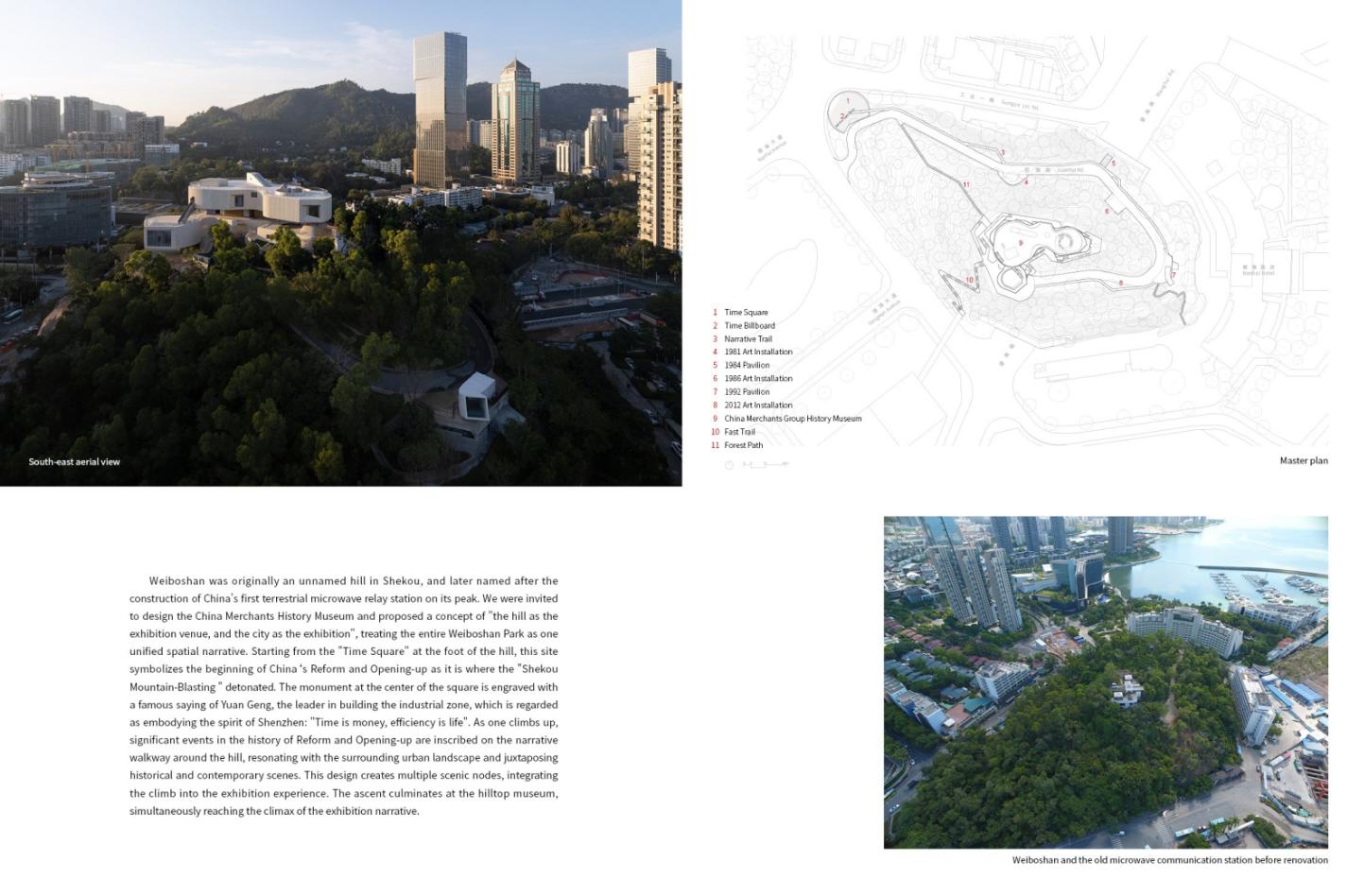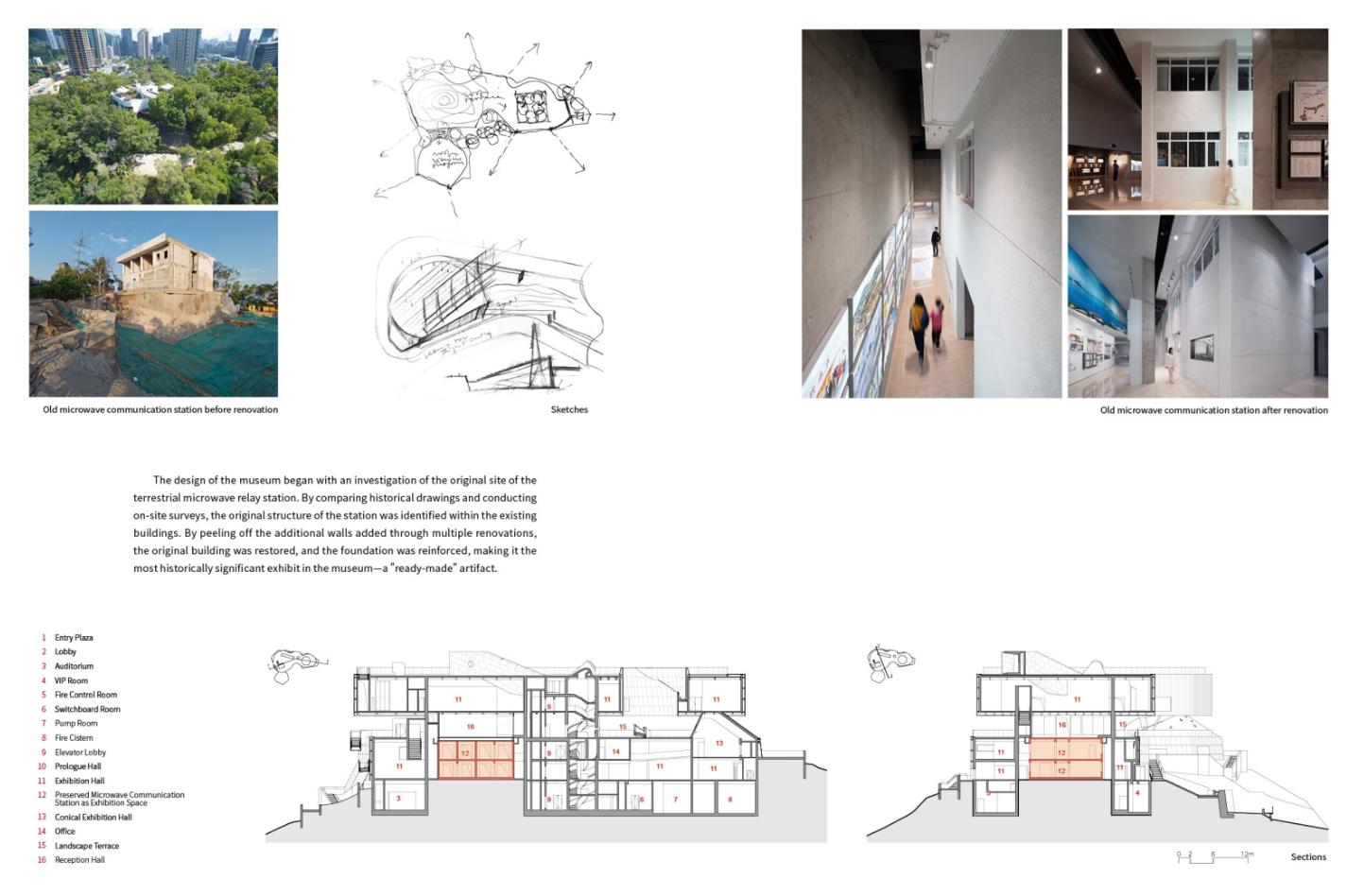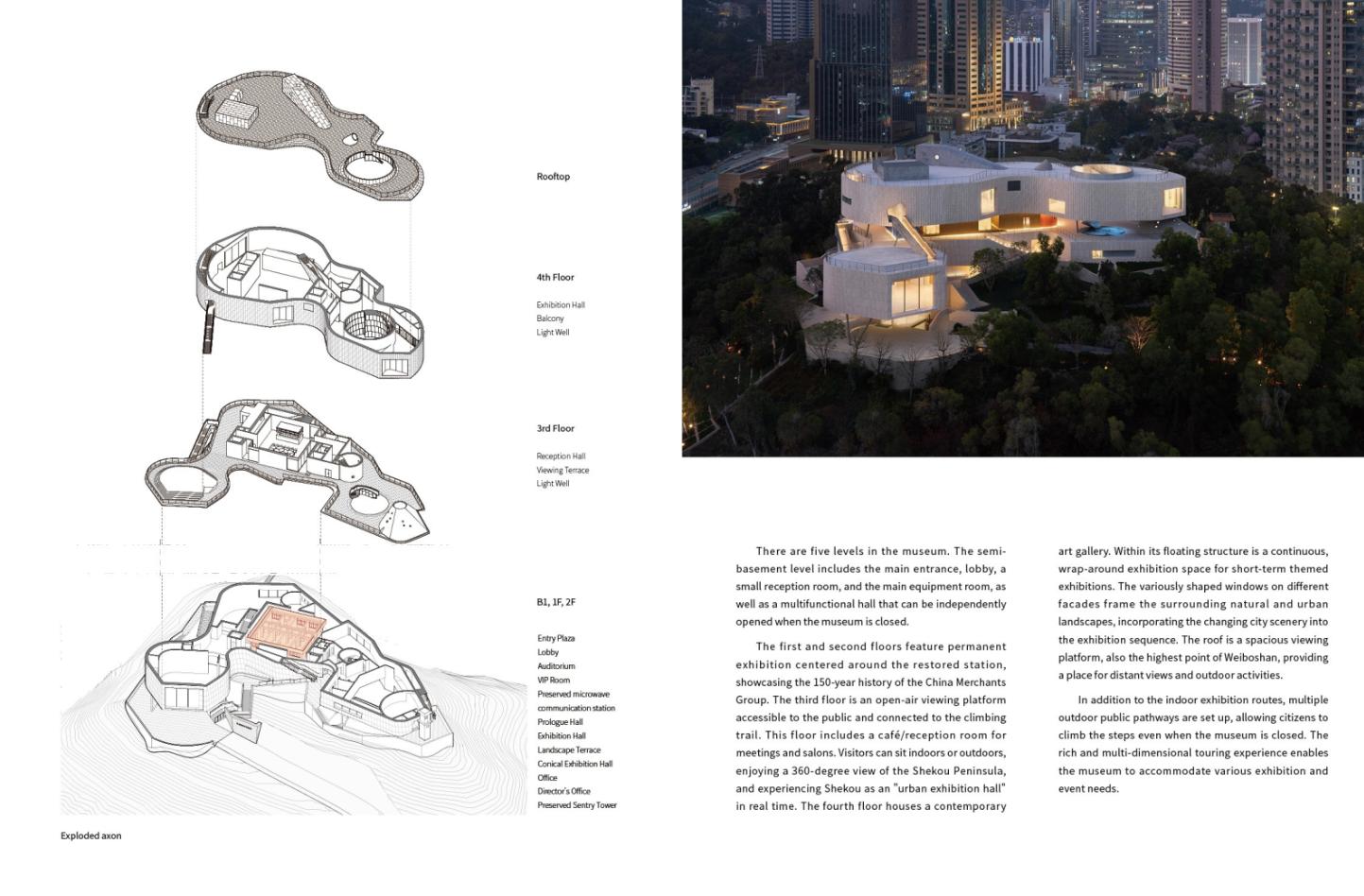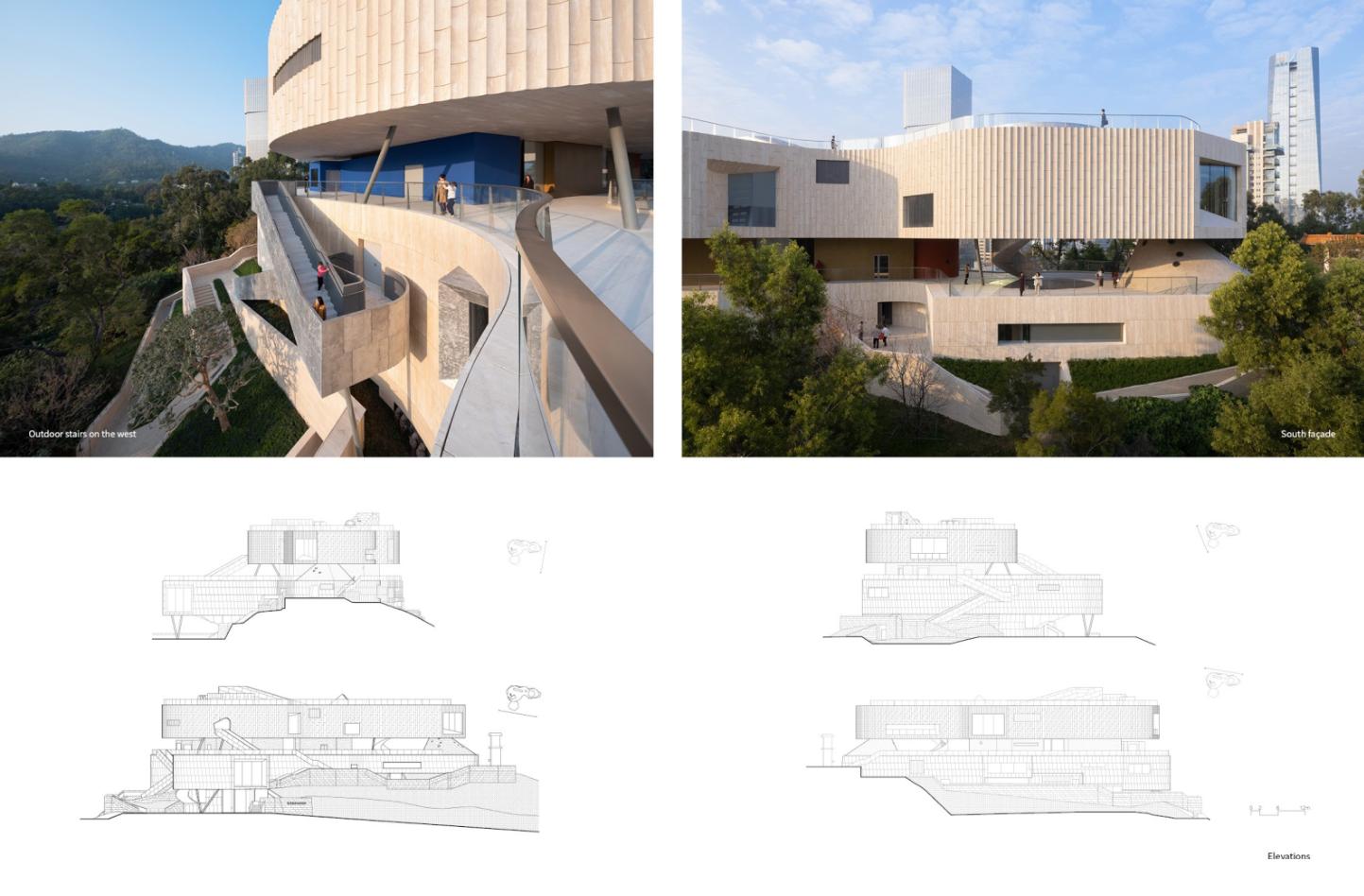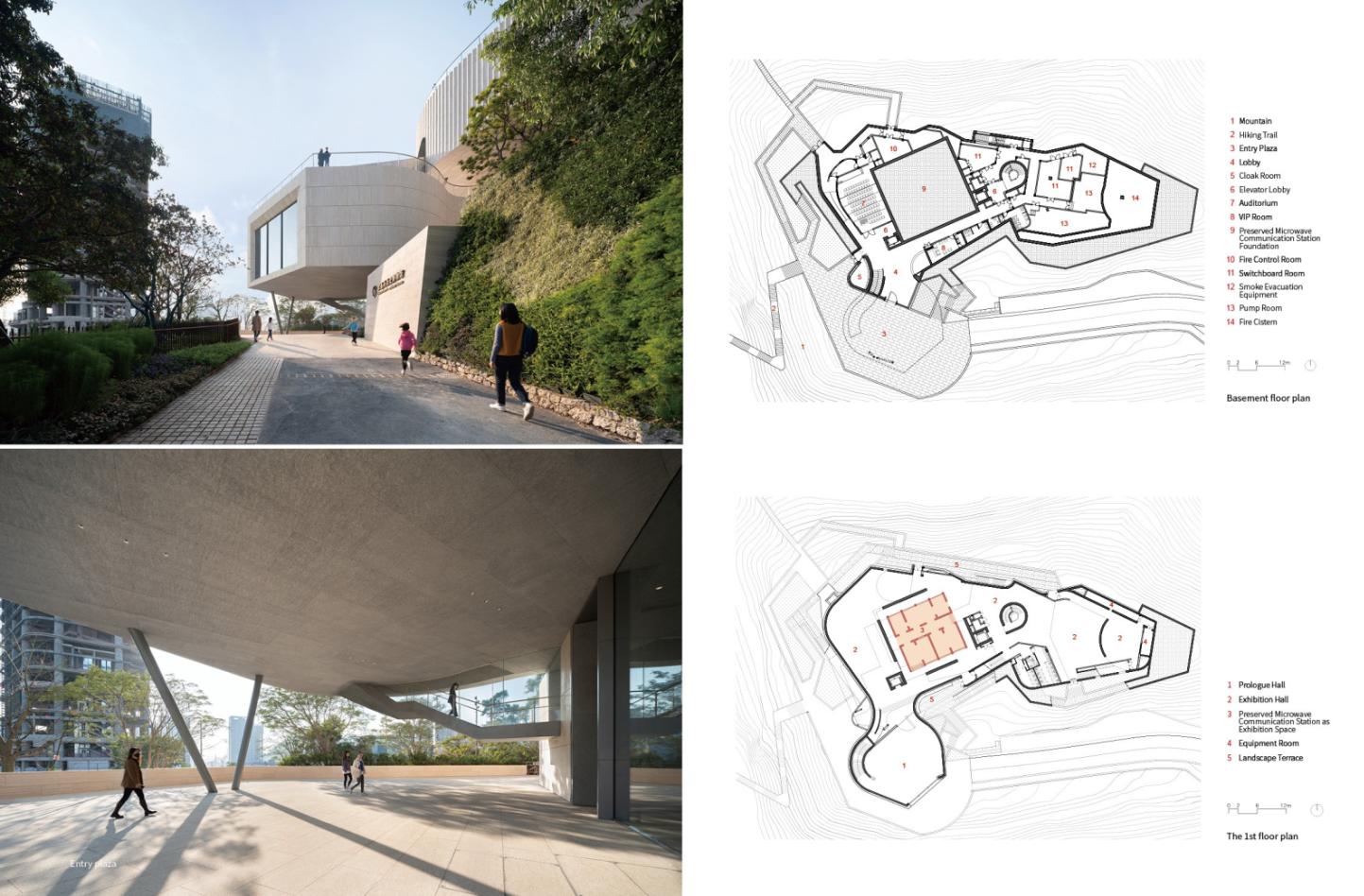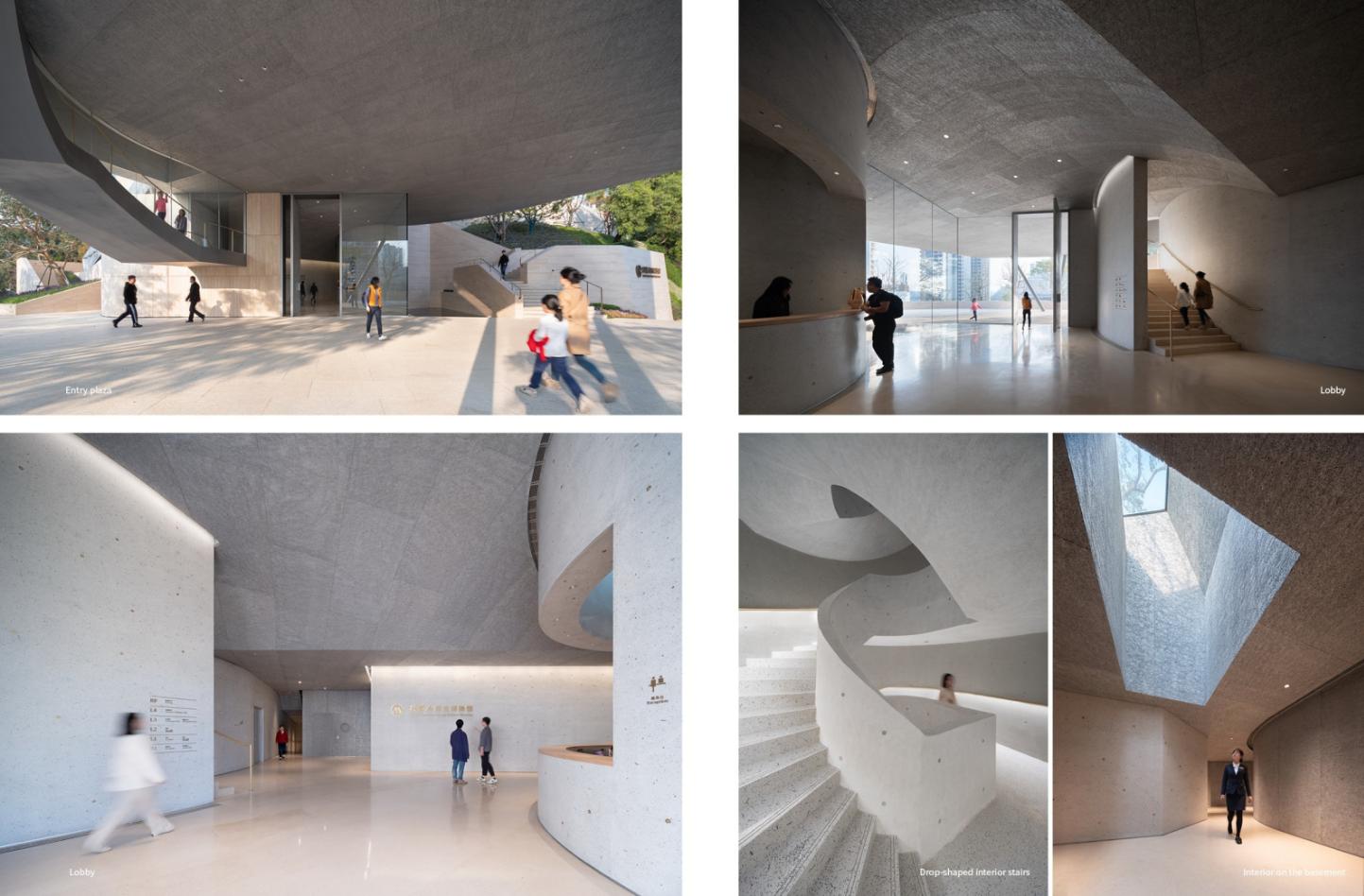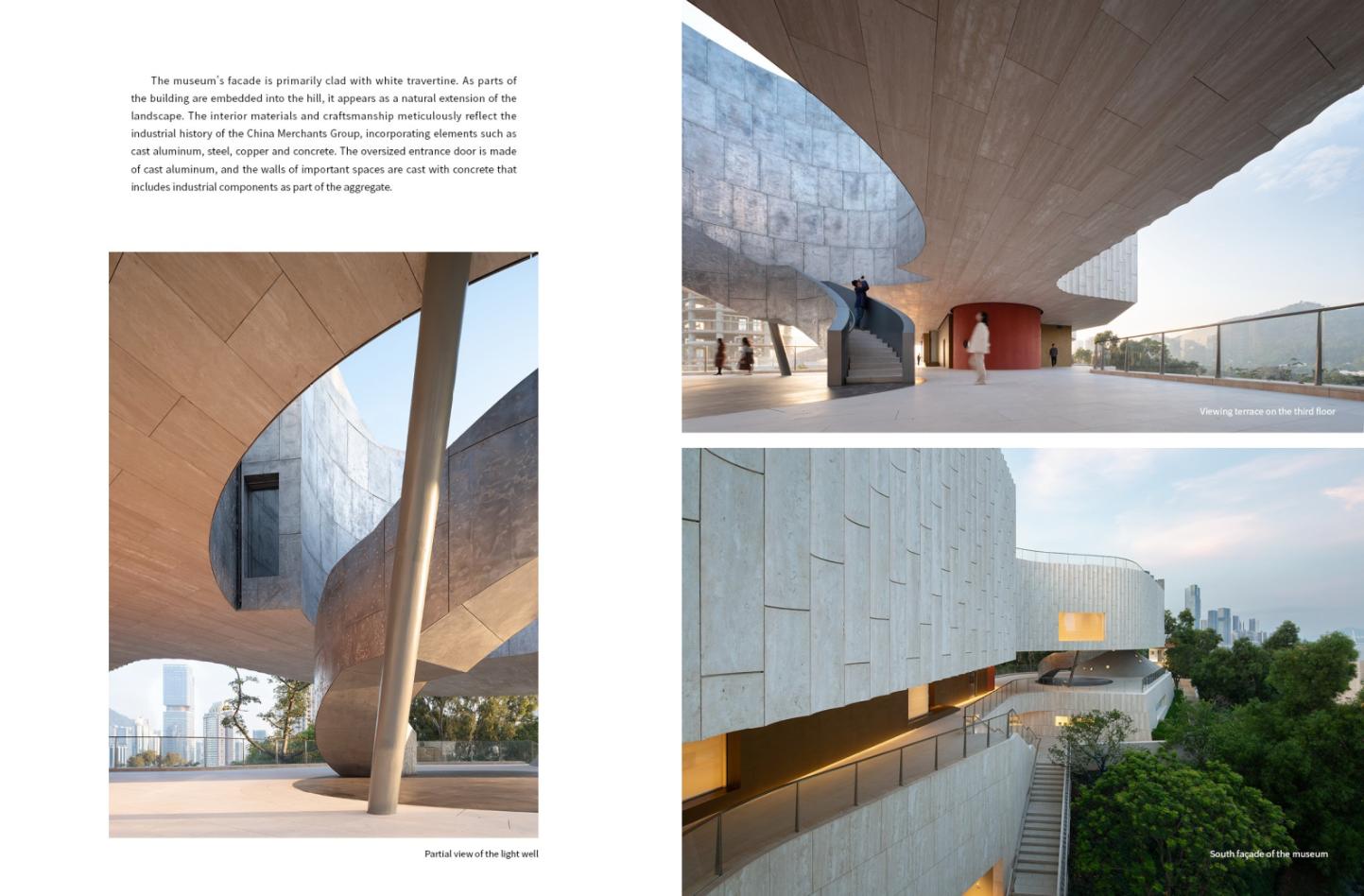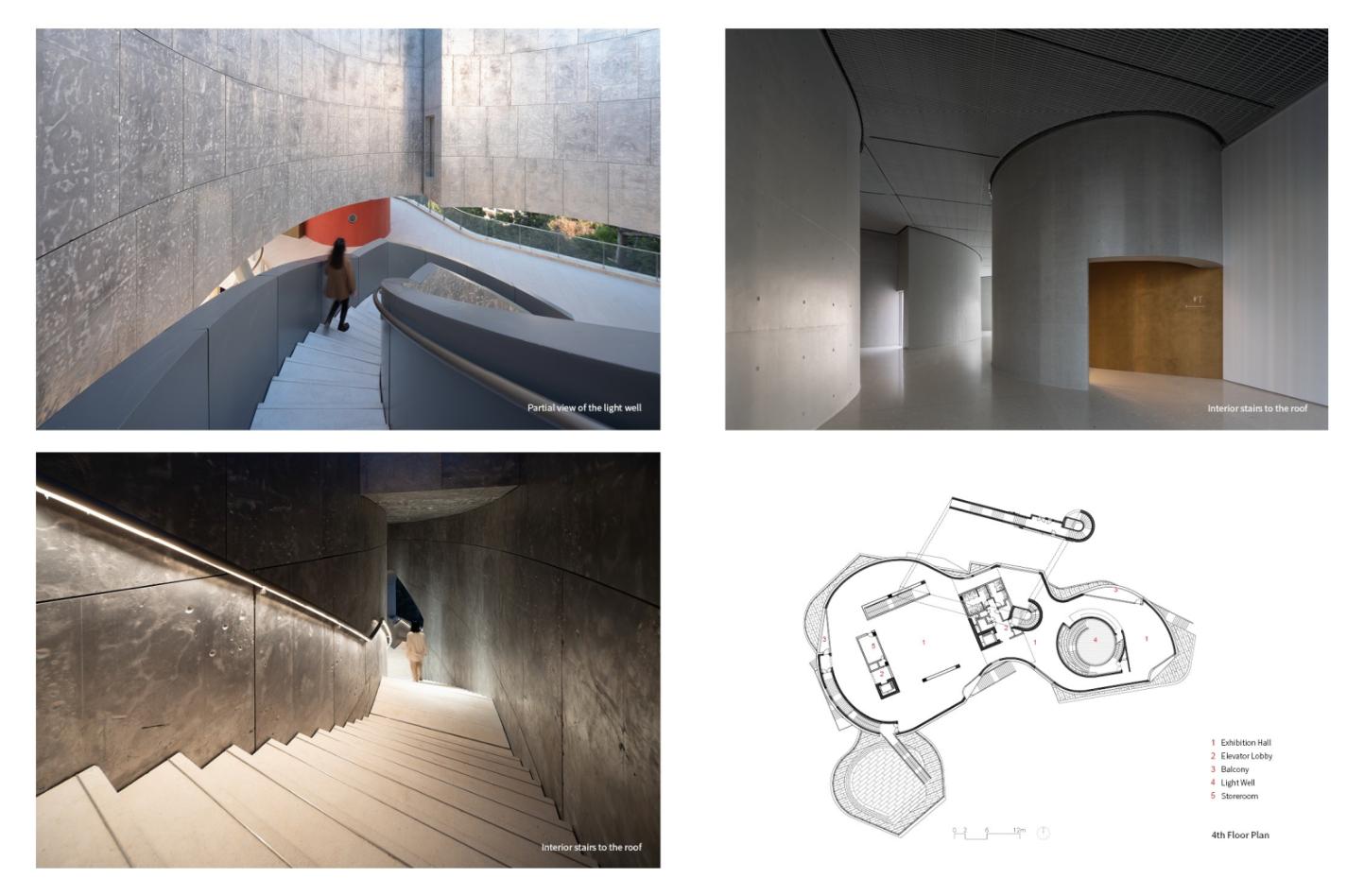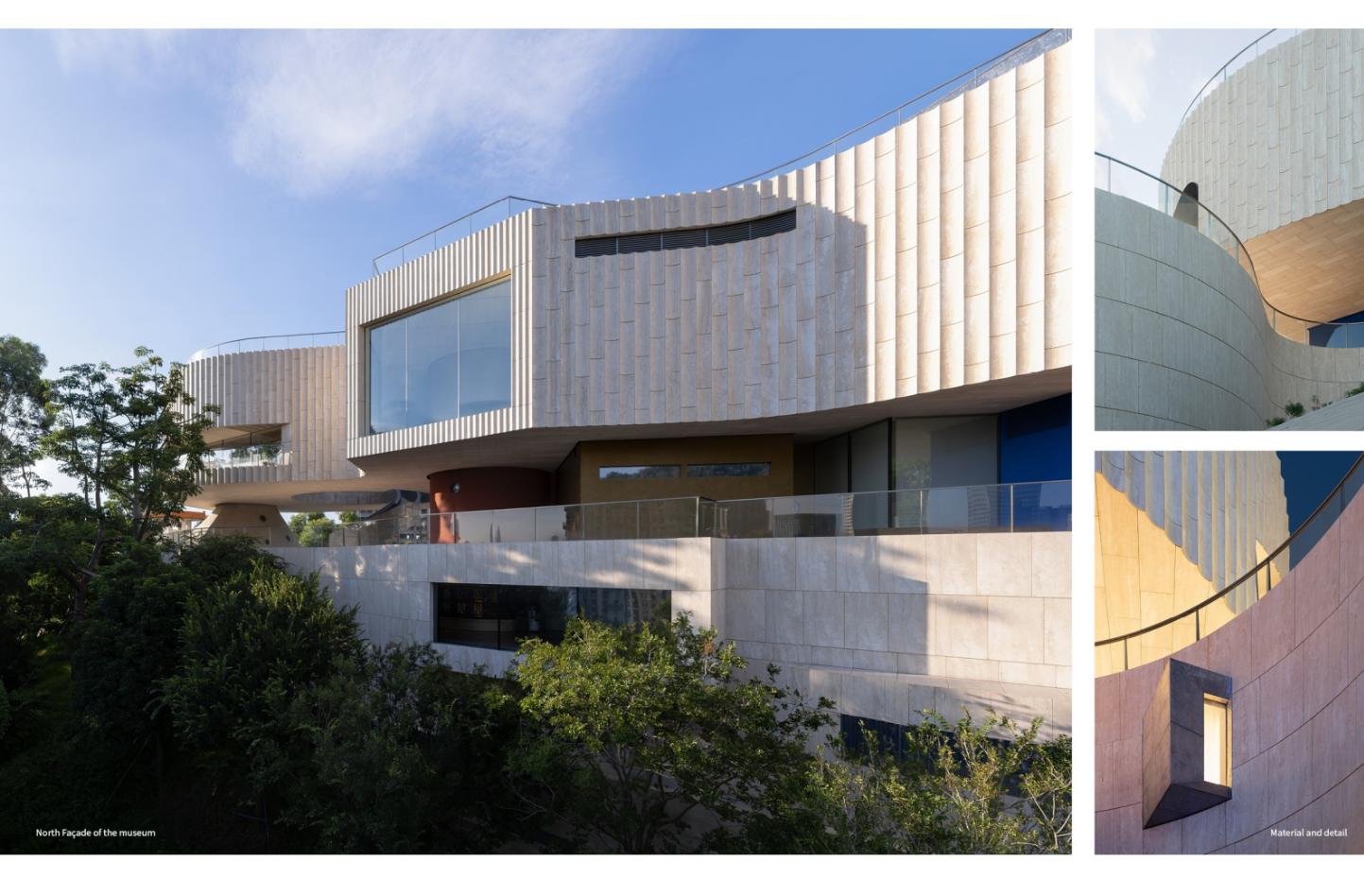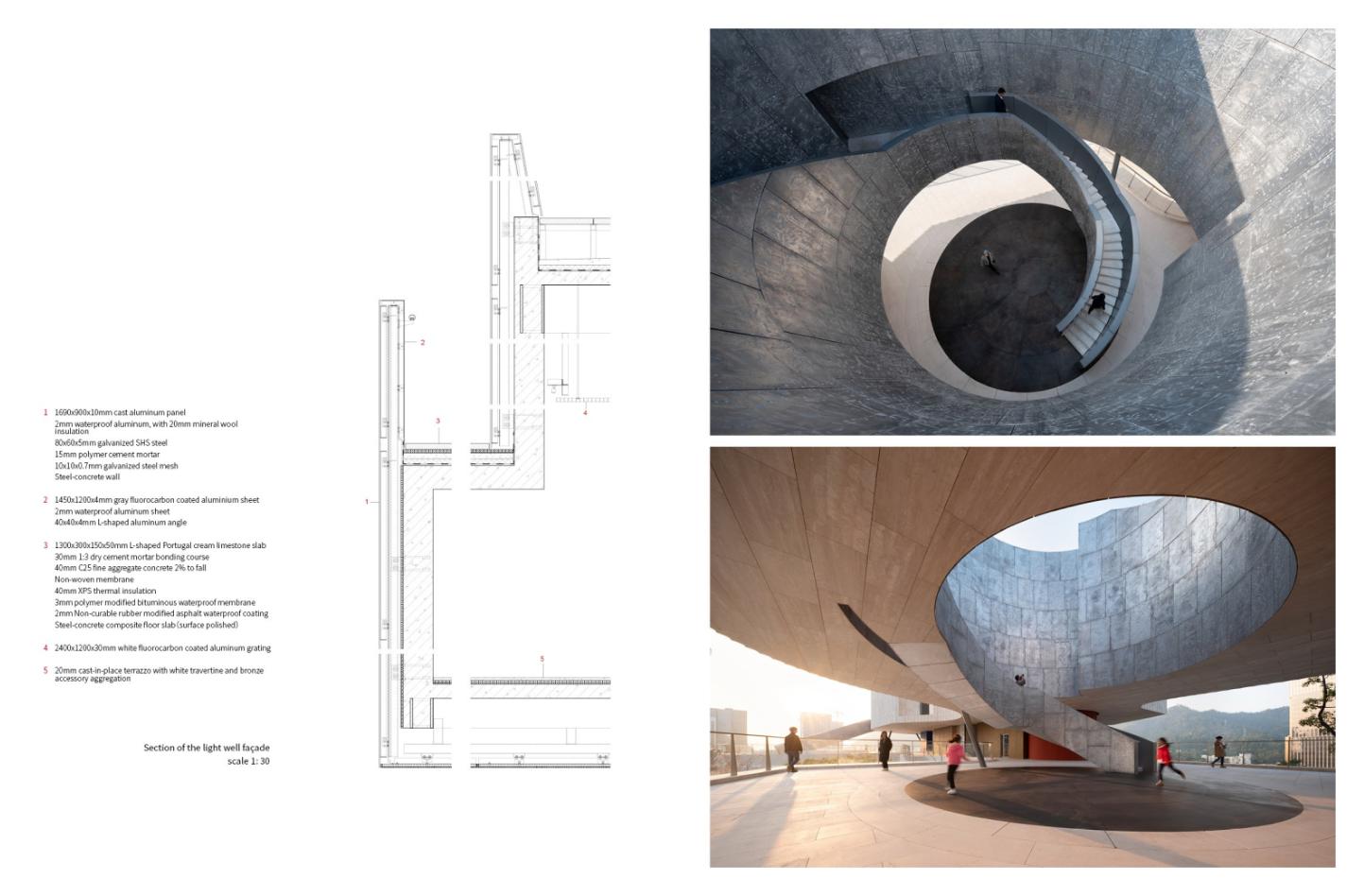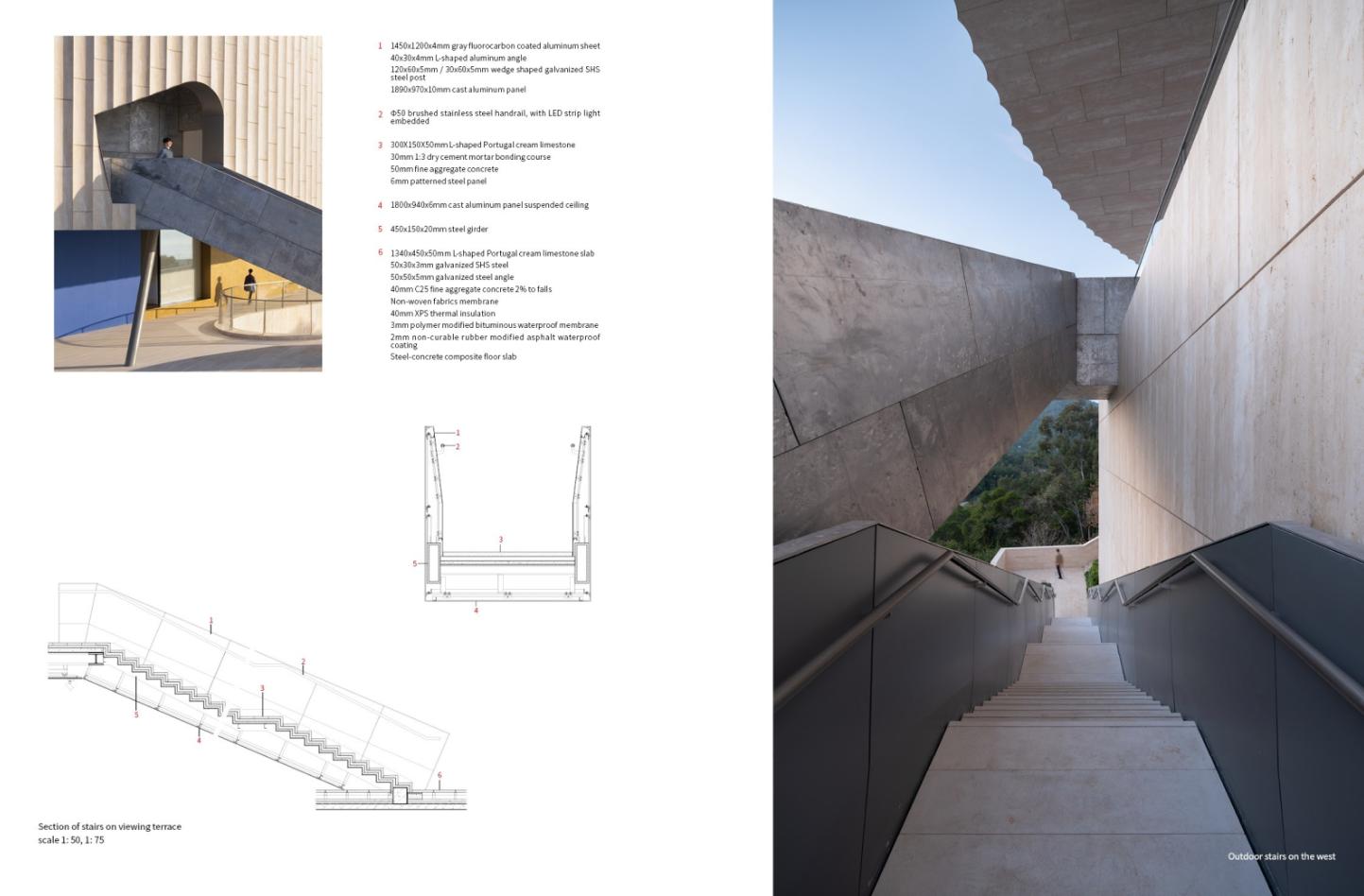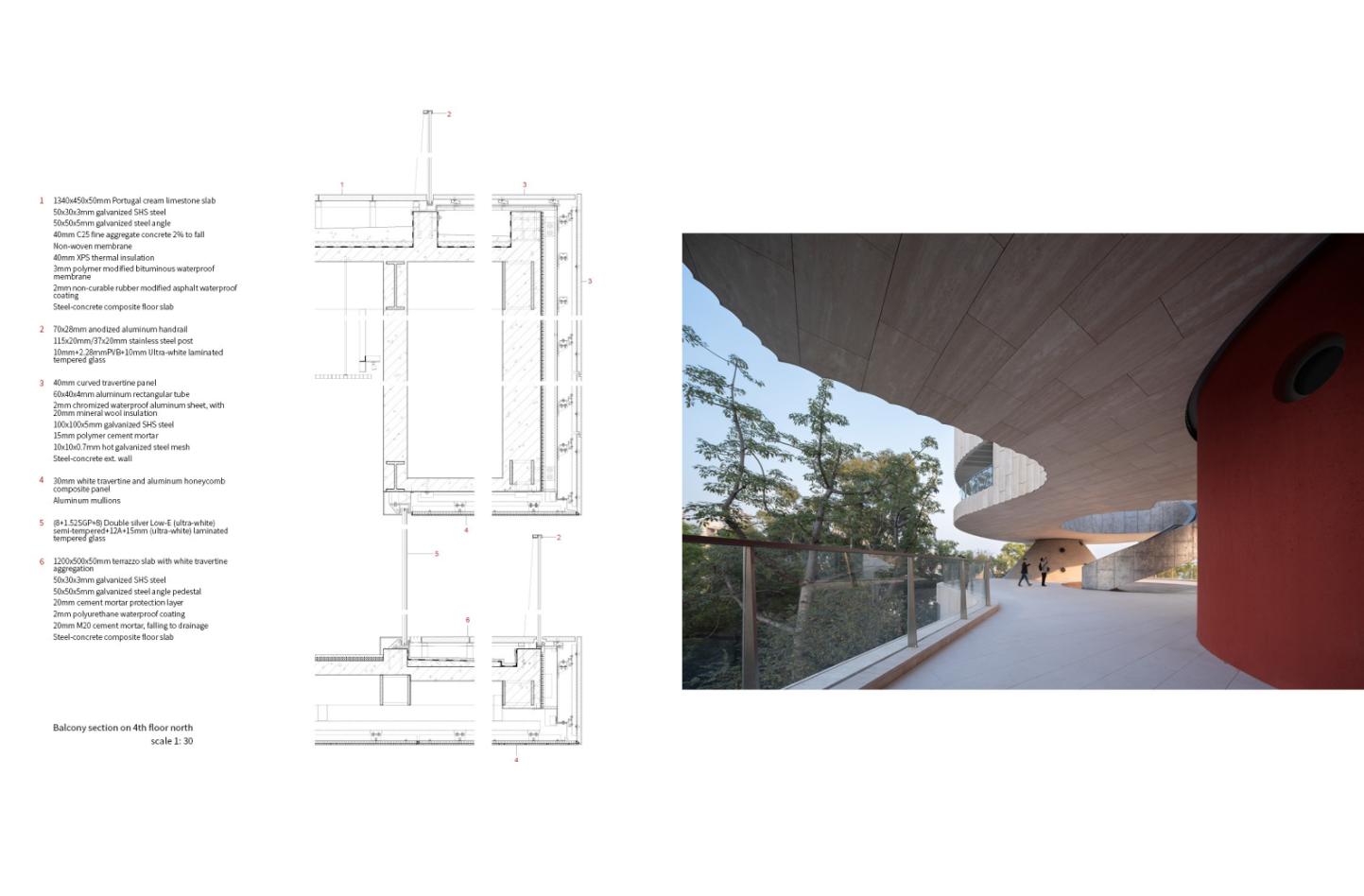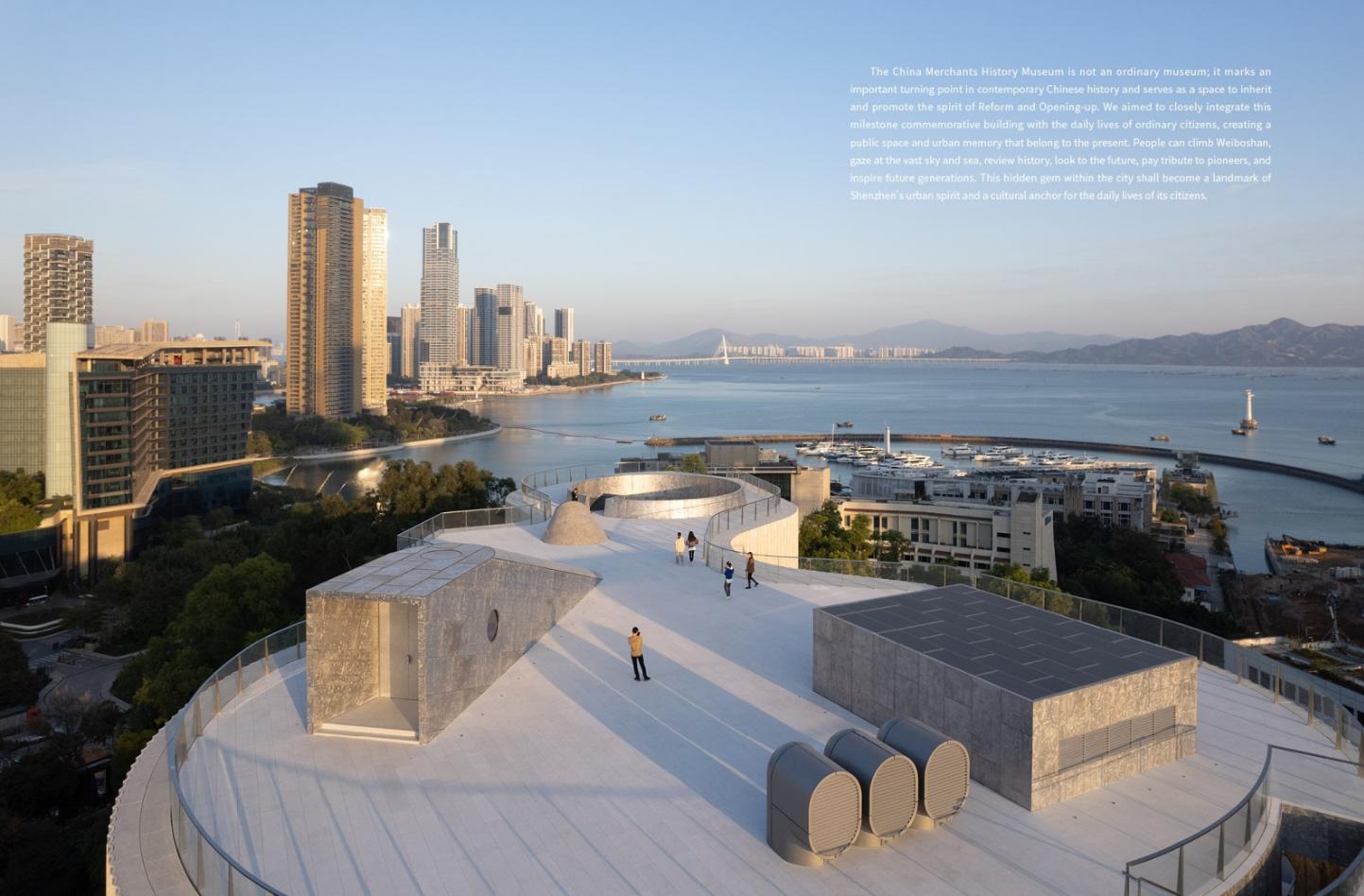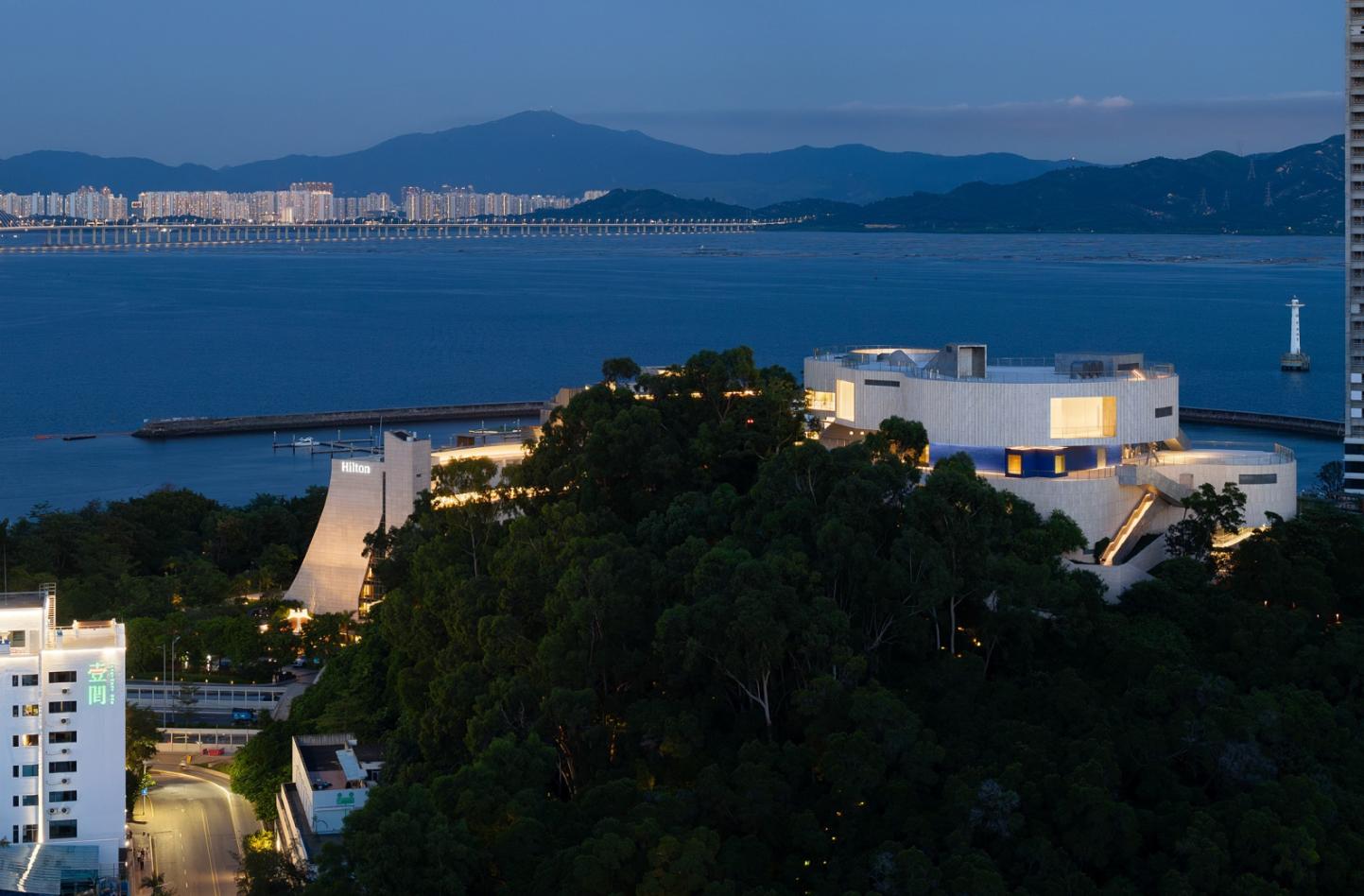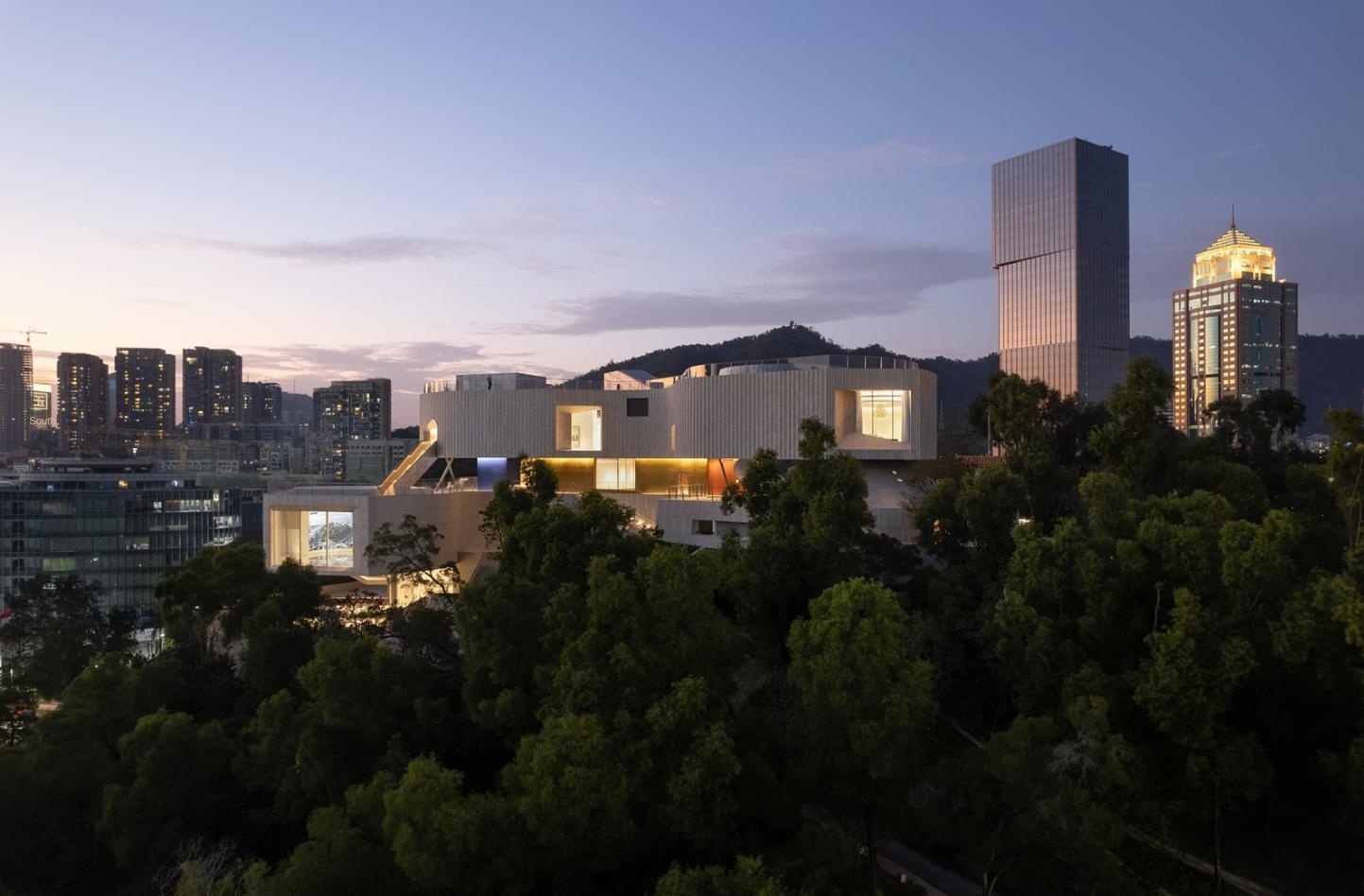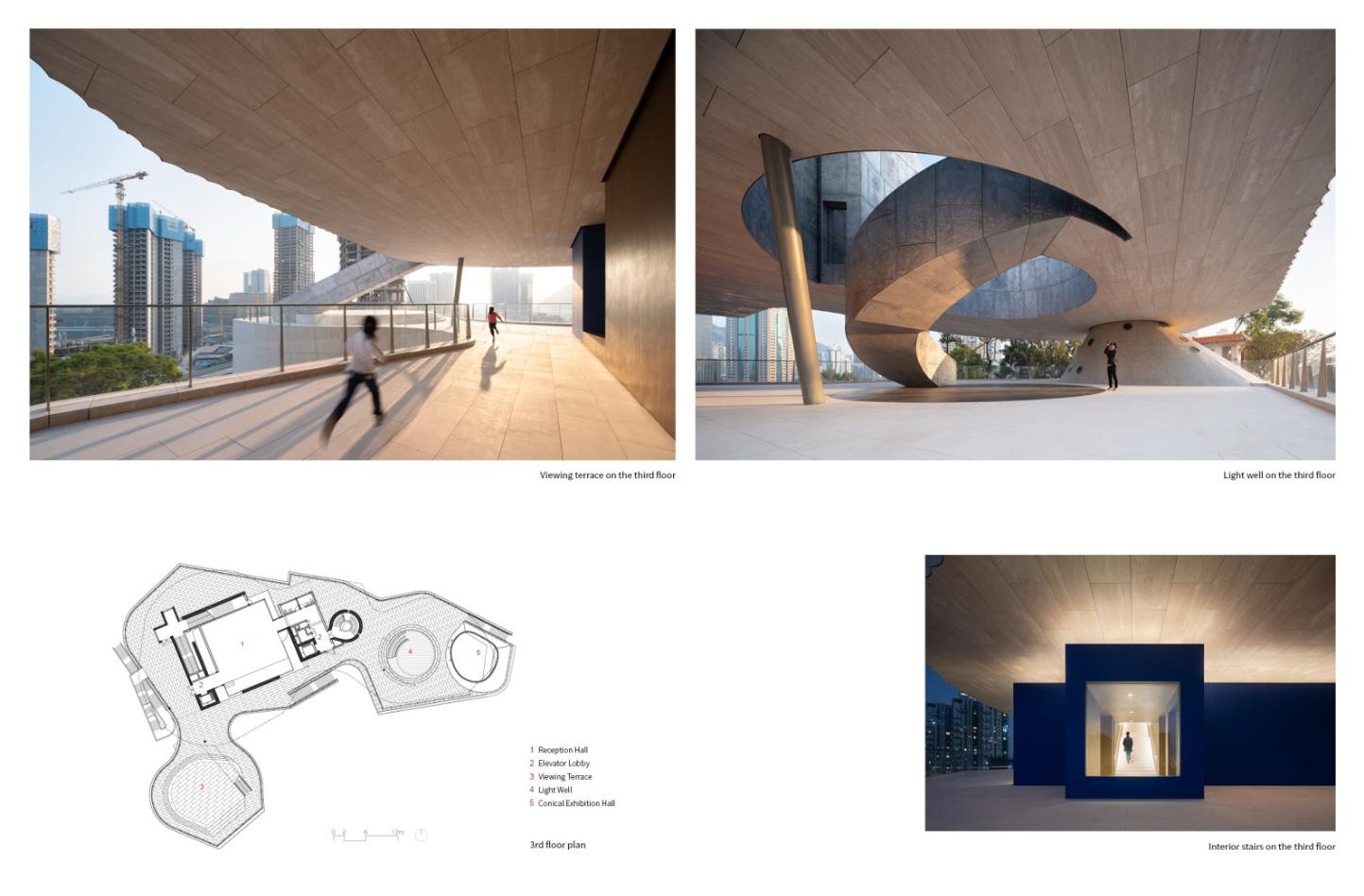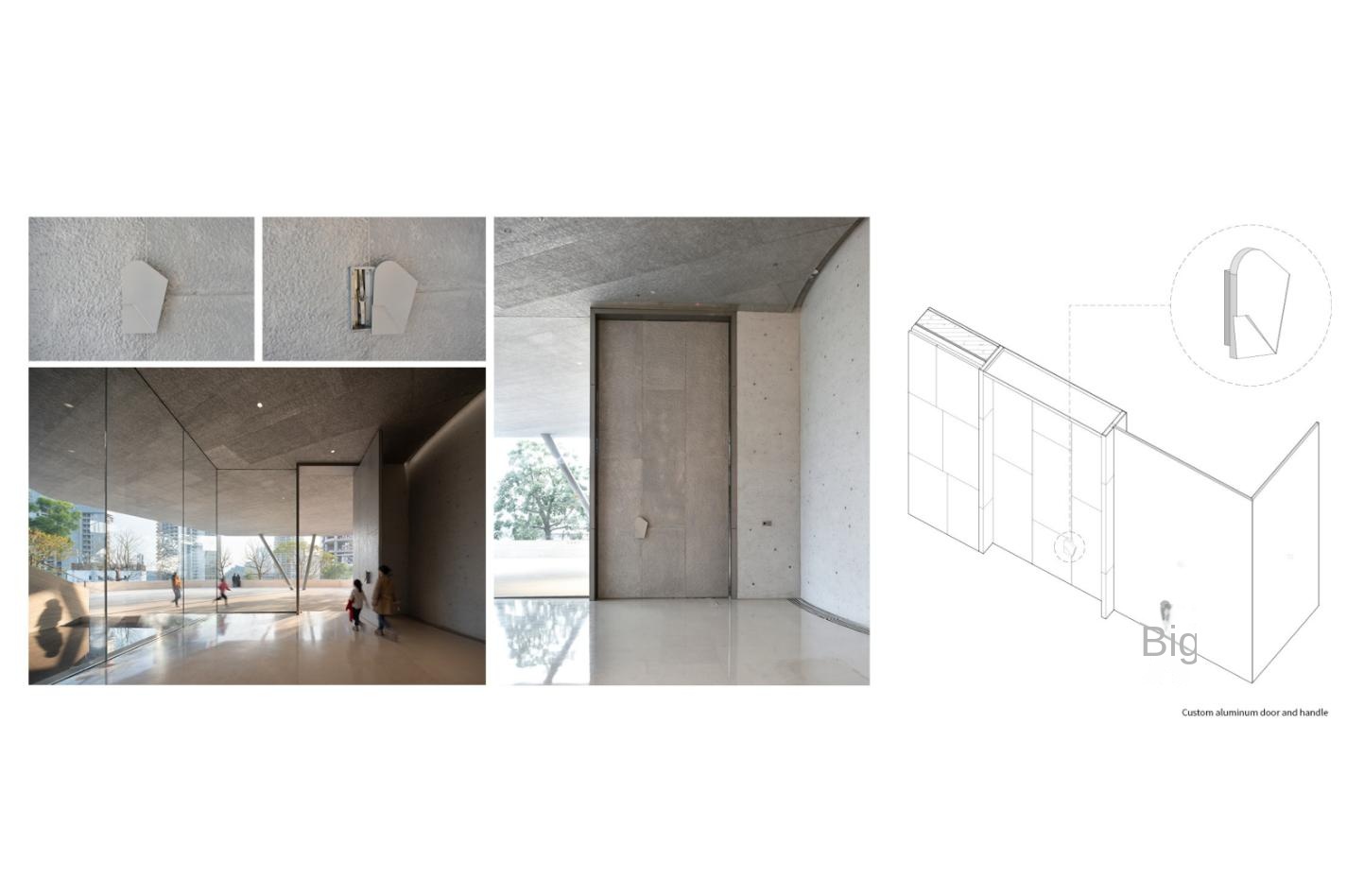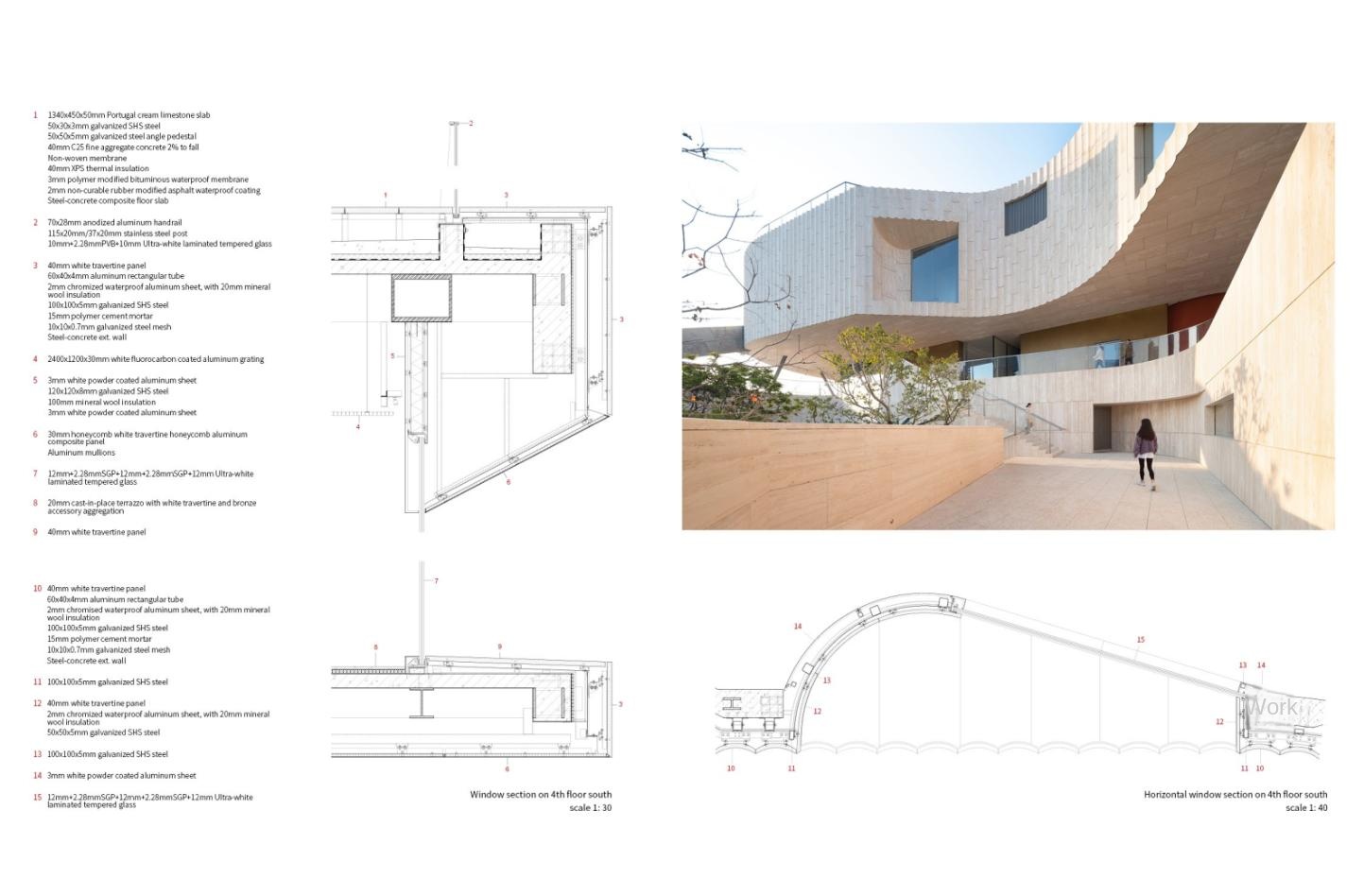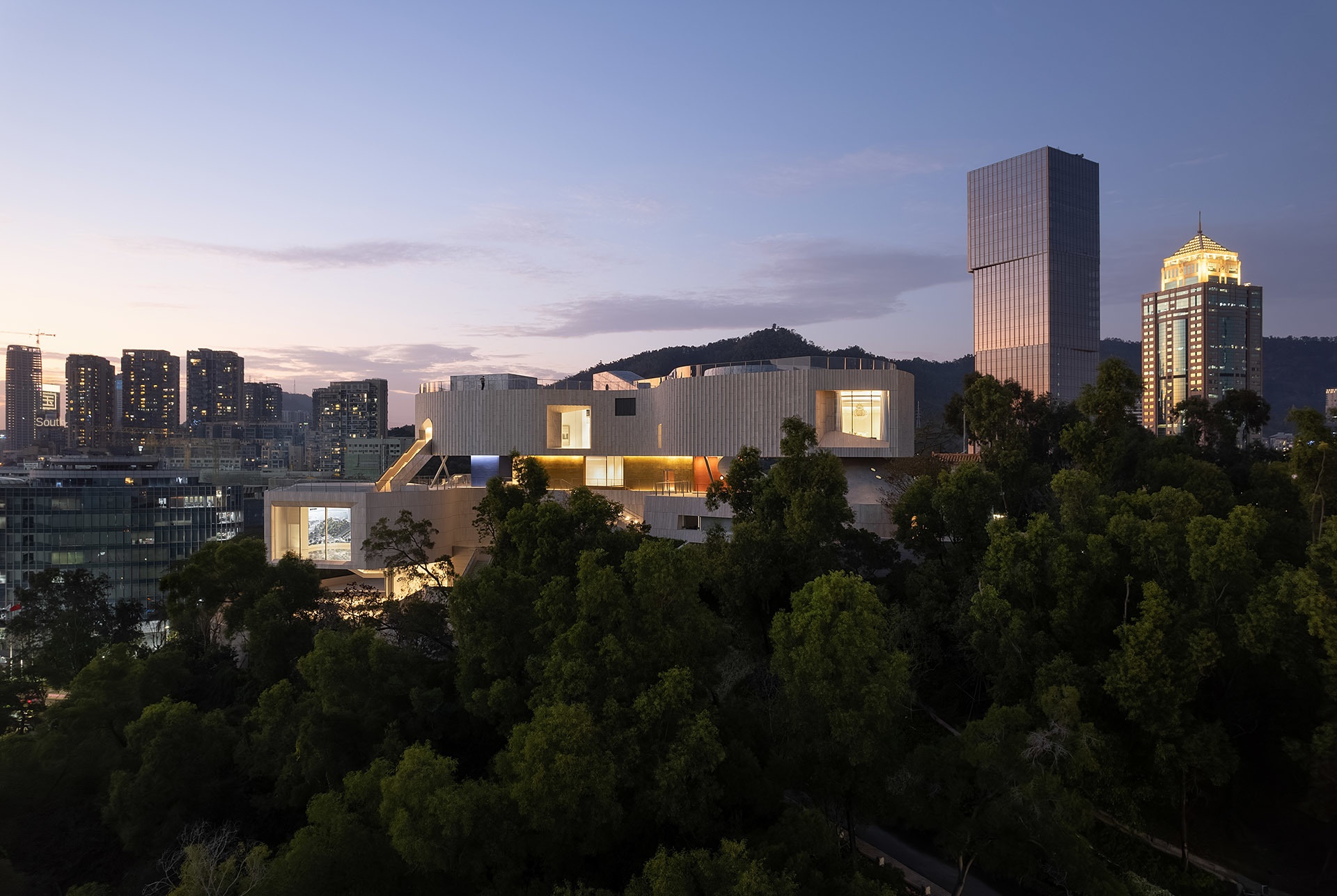
South-west view©TAL
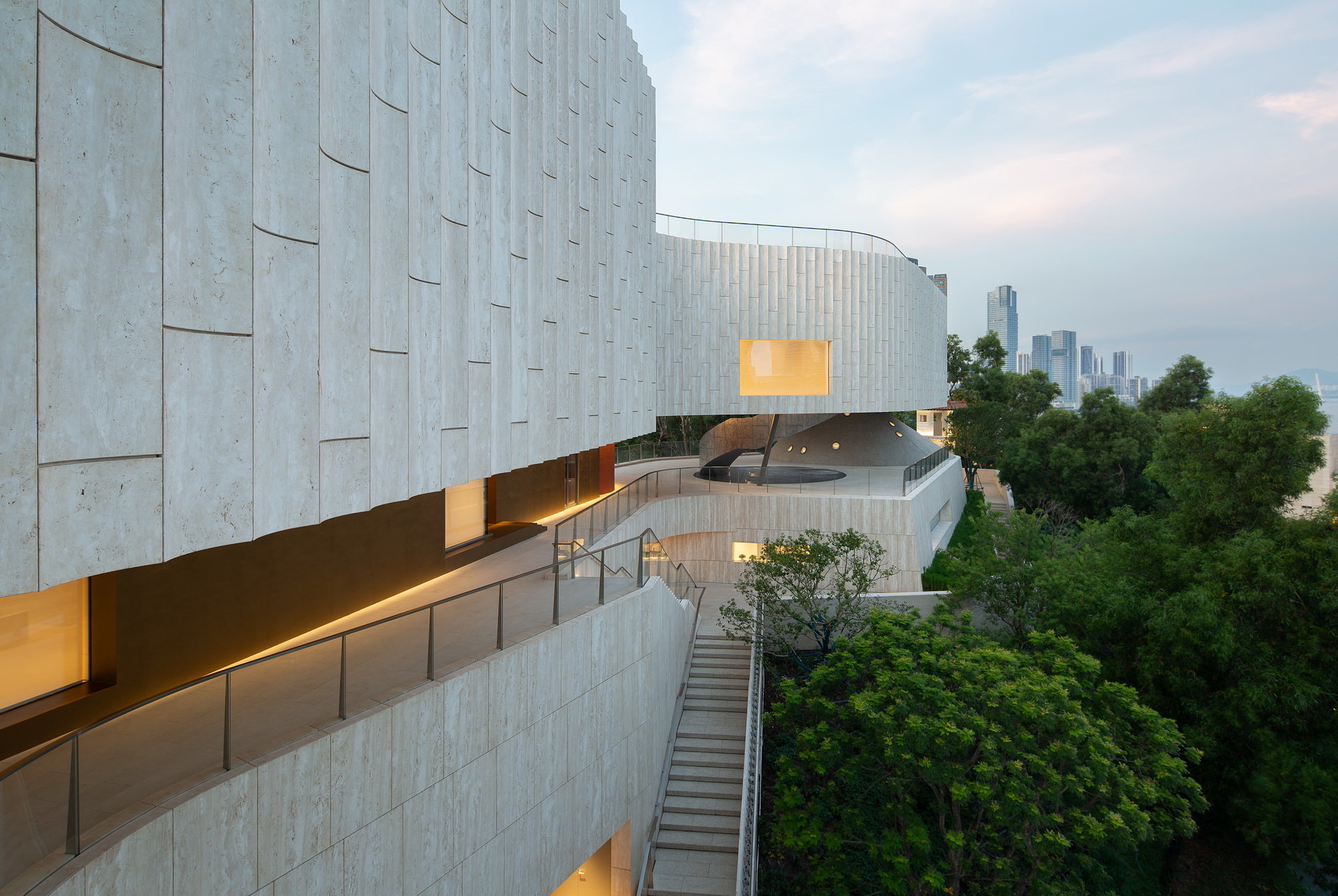
South façade of the museum©TAL
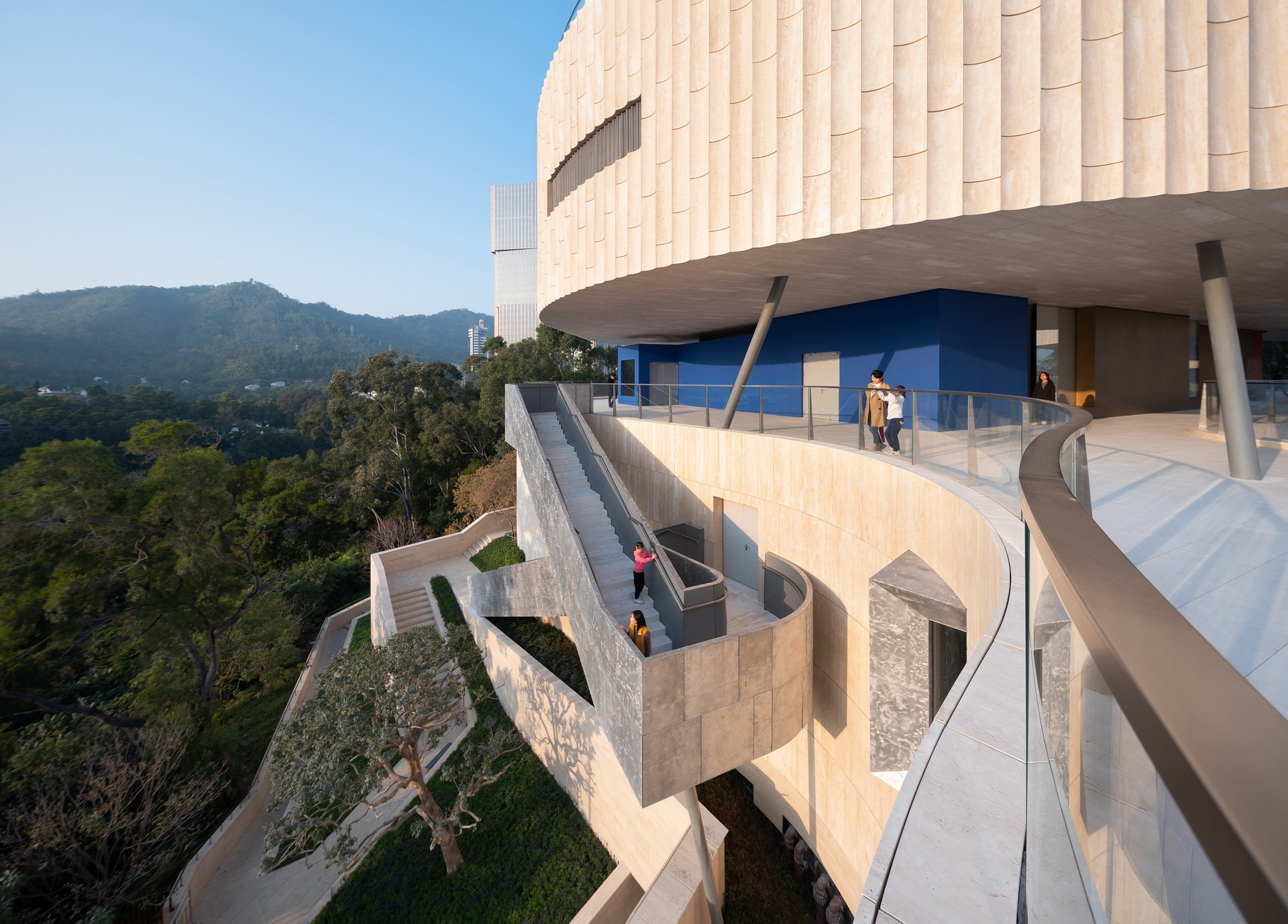
Outdoor stairs on the west©TAL

Lobby©TAL
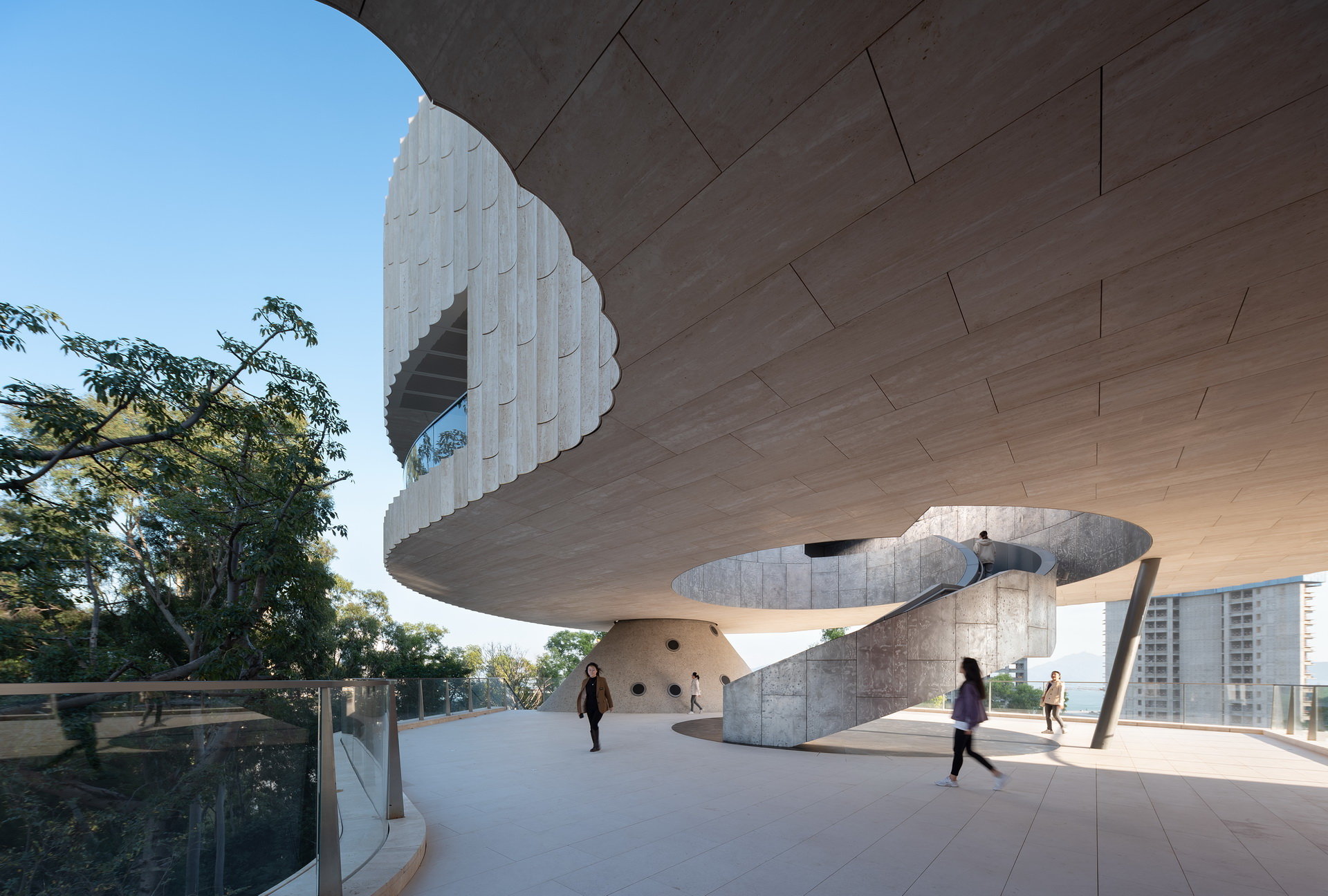
East side of the third floor viewing terrace©TAL
China Merchants Group History Museum & Weiboshan Park
Microwave Mountain was originally an unknown hill in Shekou, named after the construction of China's first commercial microwave station on the top of the mountain. Urban practice was invited to design the history museum of China Merchants Bureau, and put forward the design concept of "mountain is the exhibition hall, city is the exhibition", taking the whole microwave mountain park as a spatial narrative whole. The narrative starts from the "Time Square" at the foot of the mountain. This is the scene of the explosion of the "Shekou Mountain Cannon", which symbolizes the beginning of reform and opening up. The monument in the center of the square is engraved with the founder of the industrial zone, Mr. Yuan Geng, who is regarded as a famous saying that condenses the spirit of Shenzhen. "Time is money, efficiency is life". Up the stairs, the important events in the history of reform and opening up are recorded in the narrative trail around the mountain, and echo with the surrounding urban landscape, presenting the juxtaposition of history this evening, forming multiple landscape nodes. Mountaineering becomes part of the exhibition, reaching the climax of the exhibition narrative to the Peak Museum.
The design of the museum started from the textual research of the original site of the microwave station. After comparing the historical drawings and on-site investigation, the original structure of the microwave station was found in the on-site buildings that had been built many times. We stripped the microwave station from the previous additional walls, restored its original appearance and strengthened the foundation. And with the microwave building as the core, the volume of the museum was expanded to the red line of the mountain top base, thus maximizing the space area. The building shows the outline of the mountain, and then the building is lifted by placing an overhead layer, as if floating on the top of the mountain. The original microwave station has become the most historic exhibit in the museum center with the attitude of "finished product.
The museum has five floors. The semi-basement floor is equipped with the main entrance, foyer, small reception room and main equipment room, as well as a multi-kinetic energy hall that can be opened independently when the museum is closed; the second floor of the 1. is equipped with a permanent exhibition hall for the 150 anniversary of China Merchants around the restored microwave station. The three overhead floors are viewing platforms open to the public, connecting hiking trails. There is a café/reception room that can be used for meetings and salons. People can sit indoors and outdoors, watch the peninsula scenery of Shekou 360 degrees, and witness the "city exhibition hall" of Shekou in progress. The fourth floor is a contemporary art exhibition hall, and the floating volume is a continuous surrounding exhibition space for short-term theme exhibitions. The windows facing different directions and shapes are the frames looking at the nature and the city around the site, incorporating the changing urban landscape into the sequence of the exhibition. The roof is an open viewing platform and the highest point of Microwave Mountain. It is a place for long-distance views and open-air activities. The design also sets up a number of outdoor public flow lines in addition to the indoor exhibition flow lines, so that citizens still have the opportunity to climb the ladder after the museum is closed. The rich and three-dimensional tour experience enables the museum to adapt to the needs of a variety of exhibitions and activities.
The facade material of the museum is mainly white cave stone, and the building volume is partially buried in the mountain and becomes a part of the mountain. The interior materials and processes of the museum use elements such as cast aluminum, copper, steel and concrete, while the walls of important spaces are poured with industrial parts mixed into concrete as part of the aggregate. The super-sized gate of the building entrance is made of cast aluminum, which delicately echoes the industrial history of China Merchants.
In the late 1970 s, China began to establish the Shenzhen Special Economic Zone with economic construction as the core. The Hong Kong Merchants Group was ordered to raise funds to establish the Shekou Industrial Zone, open mountains and rock reclamation to build a port, attract foreign investment, and open China's reform and opening up. In 2020, China Merchants Group decided to establish the China Merchants Group History Museum on the site of the microwave station and the hill where the first shot was fired. As a pioneer in the glorious era, China Merchants Group's History Museum is responsible for remembering the spirit of Shekou and paying tribute to the pioneers of reform and opening up. Meng Yan, the partner of urban practice, was invited to preside over the architectural design, and put forward the concept of "mountain is exhibition field, city is exhibition", and the whole microwave mountain was designed as a whole space. The design reservation restoration reproduces the original microwave station site built in 1981. Starting from the entrance square at the foot of the mountain, design a route that combines mountaineering and exhibition. The original microwave building at the top of the mountain was sealed off in the newly built pavilion and became an exhibit. The third floor is lifted as a whole, and the ring core tube is partially overhead to form a 360-degree public viewing platform. This is the place where historical figures come to see the vicissitudes of Shekou. Now a commemorative building is being built to open to the public.
The China Merchants History Museum is not an ordinary museum, it marks an important turning point in contemporary Chinese history,. We are trying to closely integrate a landmark monumental building with the daily life of ordinary citizens to create a public space and urban memory that belongs to the present. People climb Microwave Mountain to see the sky and the sea. At the same time, they are here to review history, look forward to the future, remember the sages and inspire future generations. Let Microwave Mountain, a secret place hidden in the city, become the spiritual landmark of Shenzhen city and the anchor of citizens' daily cultural life.
URBANUS Urban Practice Founding Partner, Presiding Architect, Registered Architect in New York State, United Kingdom Chartered Registered Architect; A number of built works have become landmarks of urban culture and life, won important architectural awards and been exhibited and published around the world, and have been permanently collected by Hong Kong M and New York MoMA. Meng Yan has long been concerned about the social and cultural issues in the transformation of Chinese metropolises, the types of high-density urban buildings, and the transformation of urban villages and old urban areas, and has served as an expert consultant for the government's urban development. He has served as the chief curator of Shenzhen Case Pavilion at the 2010 Shanghai World Expo and the chief curator of Shenzhen Shuang in 2017.







